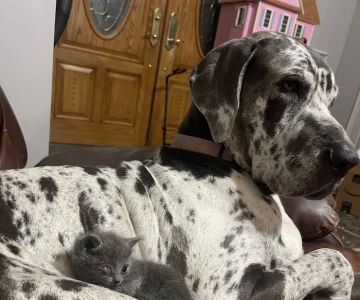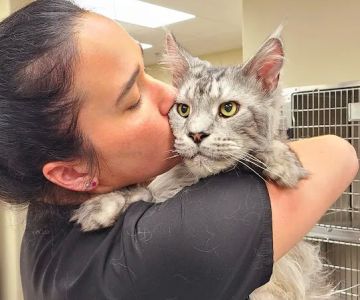Understanding the Role of Veterinarians in Treating Wild Animals
When we think of veterinarians, we often picture them working with domestic pets like dogs and cats. However, the scope of a veterinarian’s expertise can extend to wild animals as well. In this article, we’ll explore the role of veterinarians in treating wild animals, the challenges they face, and how they contribute to wildlife conservation and rehabilitation. Whether you're a wildlife enthusiast or just curious about animal care, understanding the work that goes into treating wild animals can be both fascinating and informative.
1. The Basics of Wildlife Veterinary Care
Wildlife veterinary care is a specialized branch of veterinary medicine. Unlike domestic animals, wild animals are not typically raised in human-controlled environments, which means they require unique care and treatment. Wild animals often face injuries or illnesses caused by their environment, such as predators, pollution, or disease transmission. In addition, many wild species are endangered or protected, requiring veterinarians to work closely with conservationists and government agencies.
Key Responsibilities of Wildlife Veterinarians
- Providing medical care to injured or sick wildlife
- Conducting research to better understand diseases affecting wild species
- Assisting with wildlife rehabilitation programs
- Supporting conservation efforts through preventive care and monitoring
2. Can Veterinarians Treat Wild Animals? Yes, But with Specific Protocols
In many cases, veterinarians can indeed treat wild animals. However, there are specific protocols and challenges involved in caring for non-domestic species. First, wild animals are often more difficult to approach and handle due to their fear of humans. Additionally, the variety of species means that treatments must be tailored to the specific needs of each animal.
For example, veterinarians might treat birds of prey for injuries or illnesses, but the methods they use for birds are different from those for mammals or reptiles. Many veterinarians specialize in specific types of wildlife, such as marine animals or birds, to ensure the best possible care.
Veterinary Treatment Protocols for Wild Animals
- Proper containment and sedation for safety
- Assessment of the animal's species and specific needs
- Collaborating with wildlife rescue teams
- Adhering to legal and ethical guidelines for wildlife care
3. Common Health Issues in Wild Animals and How They Are Treated
Wild animals face a range of health issues, many of which are exacerbated by human activities. From habitat destruction to climate change, wildlife can be exposed to unique stressors that lead to illness or injury. Some common health issues veterinarians treat in wild animals include:
- Trauma and Injury: Wild animals may suffer injuries from collisions with vehicles, predators, or traps. Veterinarians often perform surgeries to treat broken bones, open wounds, or internal injuries.
- Infectious Diseases: Diseases like rabies, avian influenza, or parasites are common among wild animals. Treatment involves antibiotics, vaccines, and sometimes quarantine to prevent the spread of disease.
- Malnutrition: Poor nutrition, often due to habitat loss, can affect the health of wildlife. Nutritional support and rehabilitation are key parts of treatment.
4. How Wildlife Rehabilitation Centers Work with Veterinarians
Wildlife rehabilitation centers play a vital role in the treatment and recovery of injured or orphaned wild animals. These centers work in close partnership with veterinarians to provide the best care for animals in need. Once an animal is stabilized and treated for injuries or illness, rehabilitation centers focus on restoring the animal to a healthy state so it can be reintroduced to its natural habitat.
The Role of Rehabilitation Centers
- Providing long-term care for animals that cannot be immediately released
- Offering specialized facilities for specific species, such as aviaries for birds or aquariums for fish
- Assisting with the release of recovered animals back into the wild
5. The Challenges Veterinarians Face in Treating Wild Animals
Treating wild animals is not without its challenges. In addition to the physical risks posed by the animal's size and temperament, there are also logistical hurdles. Veterinarians must often work in remote locations or in unpredictable environments, and they may not have access to the same resources as those available for domestic animal care.
Furthermore, many wild animals are protected by law, requiring veterinarians to navigate complex legal frameworks regarding the treatment of these animals. Ethical considerations also play a major role, as veterinarians must weigh the risks and benefits of treatment versus the potential for causing further harm.
Common Challenges for Wildlife Veterinarians
- Limited resources and funding for wildlife care
- Need for specialized knowledge in various species
- High risk of disease transmission from animals to humans
- Ensuring humane treatment under challenging conditions
6. How to Support Wildlife Veterinary Care
If you’re passionate about wildlife and want to support the efforts of veterinarians working to treat and rehabilitate wild animals, there are several ways you can help. Many wildlife clinics and rehabilitation centers rely on donations and volunteers to keep their operations running. By supporting these organizations, you can contribute to the well-being of countless animals in need.
Ways to Get Involved
- Donate to wildlife rescue organizations
- Volunteer your time or expertise
- Advocate for wildlife conservation and protection laws
- Support wildlife-friendly policies in your local community
Conclusion
In conclusion, while veterinarians can treat wild animals, doing so comes with unique challenges. These professionals play a vital role in wildlife conservation and rehabilitation, offering their expertise to ensure that injured or sick wild animals get the care they need. Whether it's through treating injuries, managing diseases, or supporting rehabilitation programs, veterinarians are essential to the health of wild species. By understanding the complexities of wildlife veterinary care, we can better appreciate the work these professionals do and support their efforts in preserving our natural world.











